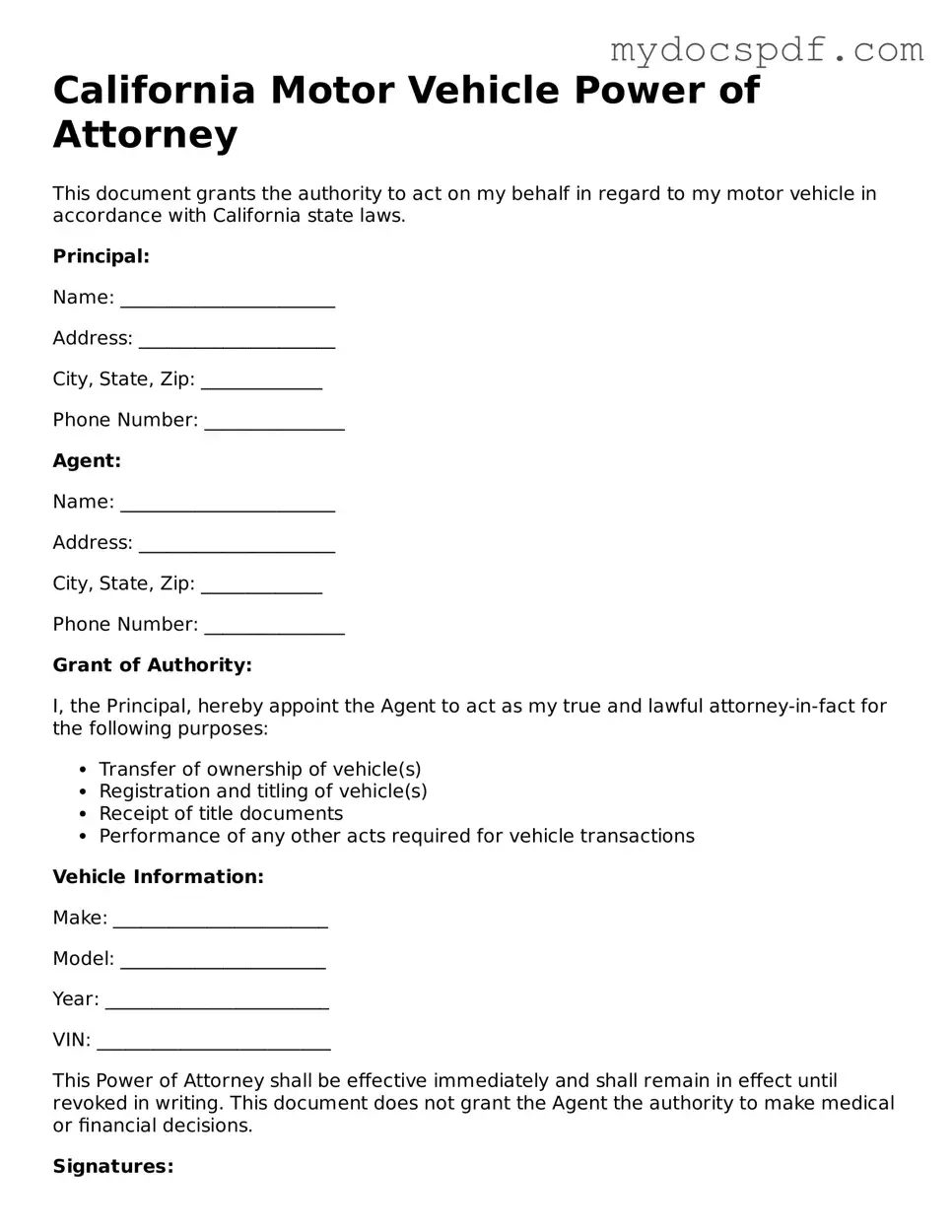California Motor Vehicle Power of Attorney
This document grants the authority to act on my behalf in regard to my motor vehicle in accordance with California state laws.
Principal:
Name: _______________________
Address: _____________________
City, State, Zip: _____________
Phone Number: _______________
Agent:
Name: _______________________
Address: _____________________
City, State, Zip: _____________
Phone Number: _______________
Grant of Authority:
I, the Principal, hereby appoint the Agent to act as my true and lawful attorney-in-fact for the following purposes:
- Transfer of ownership of vehicle(s)
- Registration and titling of vehicle(s)
- Receipt of title documents
- Performance of any other acts required for vehicle transactions
Vehicle Information:
Make: _______________________
Model: ______________________
Year: ________________________
VIN: _________________________
This Power of Attorney shall be effective immediately and shall remain in effect until revoked in writing. This document does not grant the Agent the authority to make medical or financial decisions.
Signatures:
Principal's Signature: _______________________ Date: ______________
Agent's Signature: _________________________ Date: ______________
Witnesses:
Signature: _______________________ Name: __________________
Signature: _______________________ Name: __________________
